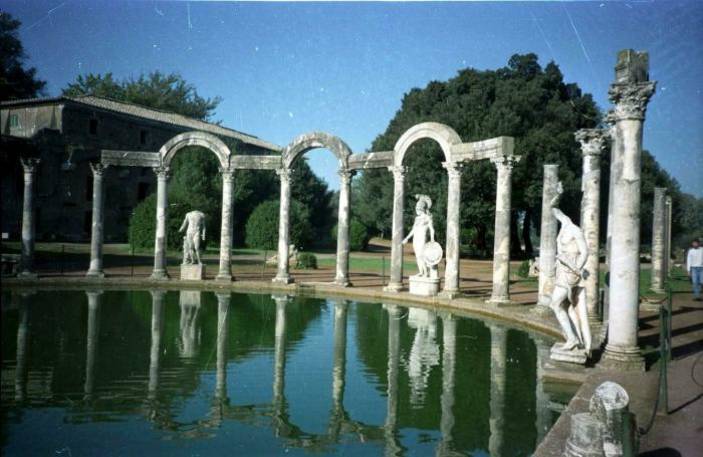


ROME - Problem is, Rome's serious garbage emergency continues, and no one wants Roman streets to become covered, Neapolitan style, with rubbish mounds so something must be done. In theory, if one can believe the promoters of the Corcolle site, and they include the president of the Lazio Region Renata Polverini,it would be in use only temporarily, for no more than two years. This ignores, of course, that after two years a new site would have to be found.
Tweets spurred on the protest among the township's citizens, galvanizing young and old into demonstrations. Tensions were such that last Thursday Italian culture minister Lorenzo Ornaghi went personally and unannounced to both Hadrian's Villa and the proposed dump site. After the visit he laid down the ultimatum that, were the dump to be assigned to Corcolle, he would resign. Instead the prime mover for the dump, Rome's Prefect-Commissioner Giuseppe Pecoraro, resigned. The question will be taken up at a meeting in late June on world heritage sites at St. Petersburg.
The problem remains on the table, however, with Regional boss Polverini and Rome Mayor Gianni Alemanno at loggerheads. Tivoli and Corcolle are not the sole outlying Regional towns less than keen on having a dump in its back yard, but finding a site near Rome is no easy task. One possible alternative to the abandoned quarry at Corcolle, for instance, overlies springs and undeground streams--as does much of Rome--meaning that pollution from the dump could seep into the water table.
A huge part of the problem is that Rome has ineffective recycling; some 85% of its waste goes into dumps like that projected for Corcolle. (Because some towns are more efficient, the total Regional figure is higher, at 25%.) This puts Italy's capital well below the average of other Italian cities. According to a report in 2011 by the national statistics agency ISTAT, every Italian produces around 533.5 Kg of waste annually. In the North almost half of this is recycled (48%), with peaks of nearly 60% of rubbish recycled in the Veneto and the Trentino Alto Adige regions. Central Italy lags far behind at 25% overall while, in the South, only around 19% is recycled.
The question then becomes why Rome lags so far behind the big cities in North Italy in waste management. It is unfair to blame all Italians, but the stewardship of Italy's unique heritage of cultural treasures - and Italians love to boast that they host half of all the cultural treasures of Europe - is simply inadequate and obsolete. Why should this be so is mysterious, particularly when its cultural treasures are precisely those which will help turn the post-industrial Italy of high unemployment into a service nation; consider the United Kingdom, home of the first industrial revolution, where 90% of the jobs are in the service industry rather than in manufacturing. The results of the Italian general census of 2012 are not yet in so comparative statistic is not yet available, but it is worth recalling that between 2007 and 2011 one million Italian workers lost their jobs.
If this is the macro picture, the lack of correct stewardship trickles down. In Naples the Girolamo Museum houses an extraordinary collection of ancient manuscripts, in a splendid, centuries-old library where philosopher Giambattista Vico worked in the early l7th Century. Last week Carabinieri arrested the library's former director, Massimo Marino De Caro, on charges of having appropriated precious ancient manuscripts and books which, it is believed, have wound up in the hands of collectors in Western Europe but also in Japan and Russia. Arrested with him were three of his assistants, two from Argentina and one from the Ukraine. De Caro was caught red handed by two library employees, who managed to film him secretly.
The micro picture could hardly ignore Pompeii. At the Villa of the Mysteries the great hall with the famous painting of the sacred mysteries was left completely unguarded by custodians, clustered outdoors to chat. In the hall tourists snapped away at the fresco, using forbidden flashes. "Why don't you put up a sign saying no flash?" said the irate Italian who phoned this tale of woe into a morning radio talk show. "That's up to the Superintendent," shrugged the custodian.
Rome's magnificent Villa Pamphilj, built in the mid-l7th century and donated in the 1960's to the city of Rome by the Doris Pamphilj family, has long been a victim of neglect, with heads lopped off statues, broken stone benches and smashed stone signs. A forlorn signs says that construction of new toilet facilities for visitors was complete in 2008 at a cost of E 125,000 (circa $200,000). None is yet open to the public.
The attention drawn to Hadrian's Villa similarly brought complaints of negligent management there, down to people arriving to walk their dogs through the park.
Source URL: http://440468.6bgr9ubv.asia/magazine/focus/facts-stories/article/troubled-stewardship-italian-treasures
Links
[1] http://440468.6bgr9ubv.asia/files/hadriansvilla1338233980jpg